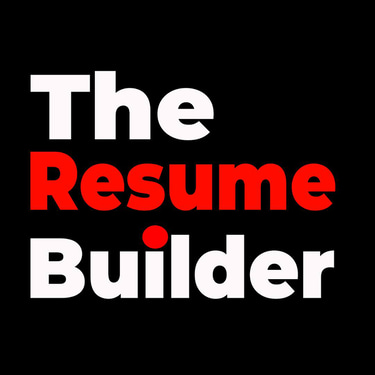How to Use Your Resume in Your Job Search Effectively
We’ve all heard it before: “Make sure your resume is perfect.” And it’s true. A well-written resume is important. So is a thoughtful cover letter. And yes, having a professional LinkedIn profile matters too. But here’s the real truth—these things alone won’t land you a job. They're tools. Resources. Not magic wands.
Abhishek Kundu
5/13/20254 min read


We all know that having a good resume is important. So is writing a cover letter and updating your LinkedIn profile. But just creating these documents and waiting for something to happen won’t get you very far. These are tools. They only work when you use them correctly and actively.
In this article, we will break down how to make the most of your resume in a practical way. You’ll learn how to apply smarter, not just more, and how to turn your resume into a real job search tool.
1. Understand What a Resume Is (and What It Isn't)
A resume is your introduction. It tells the employer what you’ve done, what you’re good at, and how you might fit into their team. But it is not a guarantee of a job.
Think of it like this: the resume gets your foot in the door, but your actions and follow-ups walk you through it.
Example:
Neha, a support executive, applied to 40 jobs using her resume. She didn't hear back from any. When she started following up with short, polite emails to HR after each application, she began getting responses. Her resume didn’t change, but her use of it did.
2. Tailor Your Resume for Different Roles
Don’t send the same resume to every company. Even if the job title sounds the same, the responsibilities may differ. Read the job description carefully and make small changes to reflect what the company is asking for.
Example:
Ravi, a system administrator, created two versions of his resume. One focused on IT infrastructure. The other emphasized his work in cloud support. Depending on the role, he sent the most relevant one. He saw better callback rates almost immediately.
3. Use Your Resume to Open Conversations
It’s not enough to just hit "apply" and wait. Find someone at the company and send them a short message introducing yourself. Don’t push your resume, just share it politely and ask a simple question.
Example:
After applying to a role in a telecom company, Priya looked up a team manager on LinkedIn. She sent a message saying, "Hi, I recently applied for the Support Lead role. I admire your team's work and would love to understand more about your department. Is the role still open?" That one message led to an informal call, and later, an interview.
4. Don’t Rely Only on Job Portals
Job sites are helpful, but they should not be your only method. Many jobs are filled internally or through referrals. Use job boards to discover openings, but take the next step, connect with real people.
Example:
Suresh kept applying on job sites for months with little success. Then, he started attending online webinars in his field and connected with the speakers and attendees. He was eventually referred by one of them for a role that wasn’t even listed publicly.
5. Learn From Your Resume
As you apply to different jobs, you’ll notice trends. Maybe certain skills keep showing up in the job descriptions. Or you realize some parts of your resume are outdated or unclear.
Example:
Fatima realized that most job postings asked for experience in Microsoft Defender, which she had but never mentioned in her resume. She added a short bullet point under her tools section and immediately started getting more views on her applications.
6. Use a Cover Letter to Fill in the Gaps
If your resume is the ‘what’, your cover letter is the ‘why’. It’s where you explain things that your resume cannot say clearly. Like why you're switching industries or why there's a break in your career.
Example:
Deepak was moving from a sales background to a customer service role. His resume alone didn’t show the link. In his cover letter, he wrote about how his experience in handling client issues and building relationships made him a strong fit. It helped the recruiter understand his story better.
7. Make Your LinkedIn Profile Work for You
Your LinkedIn should reflect your resume, but not copy it word-for-word. Think of it as a place where people can get a feel for who you are professionally.
Example:
Shalini, an HR professional, added a short paragraph in her LinkedIn summary about her passion for building inclusive teams and training new joiners. When a recruiter searched for someone with experience in onboarding, her profile came up, not just because of keywords, but because her summary told a clear story.
8. Keep Track of Your Applications
Use a simple notebook or Excel sheet to track your applications. Write down where you applied, when, and whether you followed up. It will help you avoid repeating applications and show you which types of roles bring better results.
Example:
Amit started tracking his job search and noticed that roles in mid-sized companies were calling him more often than those in large multinational firms. So, he focused more of his energy on similar organizations and saw better results.
9. Avoid Getting Stuck in the Editing Loop
Many people spend too much time perfecting their resume without applying anywhere. You can tweak a resume forever. But action brings results.
Example:
Pooja spent three weeks trying to perfect the wording of her resume. Her friend told her to send out five applications with the version she had. Two of them replied, and she realized it didn’t have to be perfect, it had to be shared.
10. Build Trust Beyond the Resume
In the end, most jobs are offered to people whom hiring managers feel comfortable with. That trust builds through interactions - emails, short calls, or recommendations from someone they know.
Example:
When Arjun applied for a role in IT compliance, he also reached out to an ex-colleague who worked at the same company. That colleague mentioned Arjun’s name to the hiring team. His resume now had a voice supporting it, and he got the interview.
Final Thoughts
Your resume is important. It shows your background and gives structure to your job hunt. But it’s not the final step. It’s only one part of the process. A resume works best when you treat it like a living tool, not a one-time file.
Here’s a quick recap:
Use your resume to start conversations, not just apply.
Edit it to suit each job, even if the changes are small.
Pair it with a good, honest cover letter where needed.
Make sure your LinkedIn tells your story clearly.
Follow up after applying. Don’t just wait.
Talk to people. Build real connections.
Keep track of where your resume is going.
Don’t overthink. Start moving.
Build trust through interaction—not just information.
A resume doesn’t find a job for you. You do.
Use it smartly, and it will open doors.
Wait for it to do the work on its own, and it will just sit in your folder.
Expert in
Professional Resume Writing Company in Kolkata, West Bengal
Professional Resume Writer in Kolkata, West Bengal
ATS Resume Writing in Kolkata, West Bengal
GET IN TOUCH
theresumebuilderindia@gmail.com
+91 89813 60947
© 2015. All rights reserved by Abhishek Kundu Resume Writing Co.
abhishek@atsresumewriting.in
